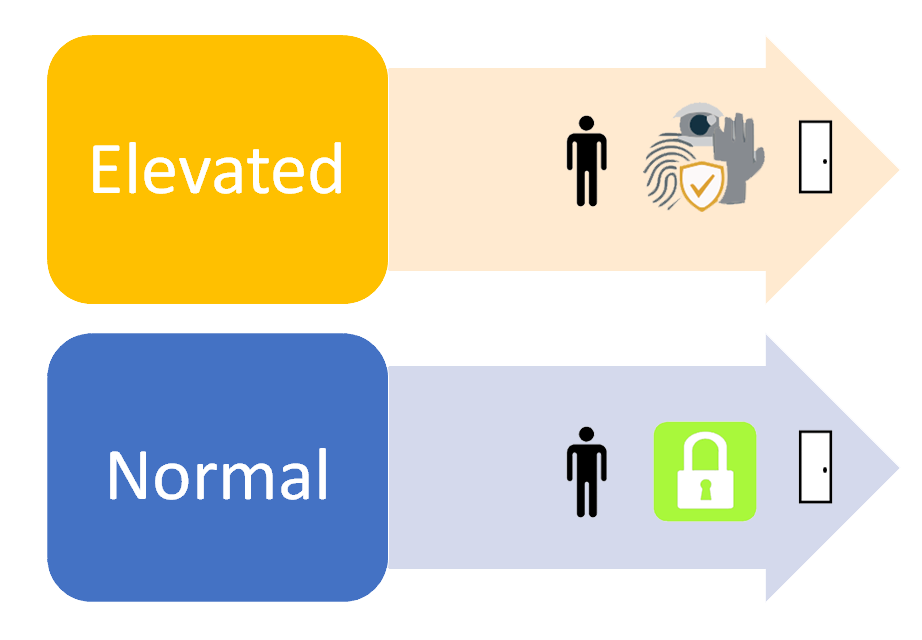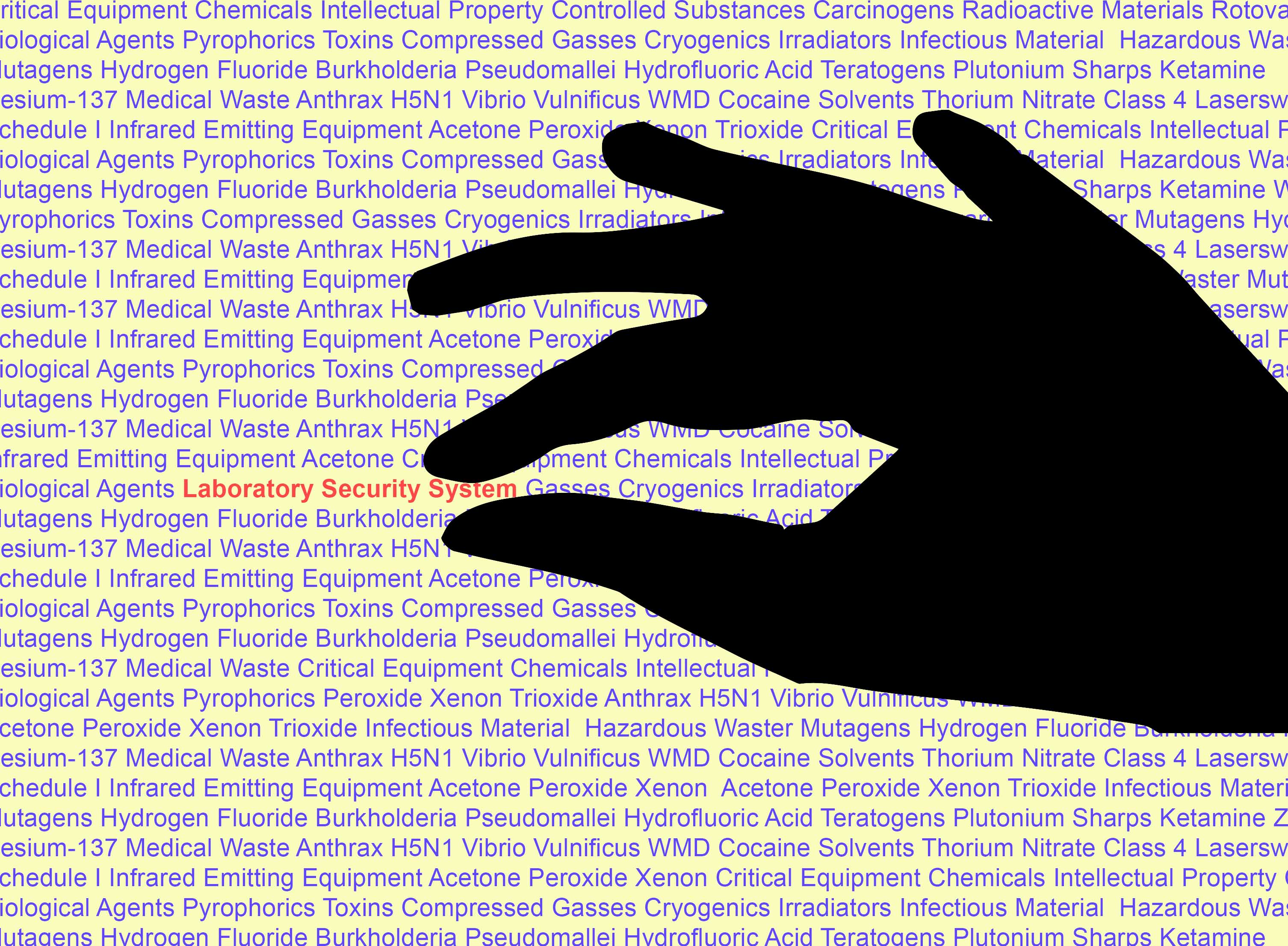Laboratory Security
Laboratory security is everyone's responsibility.
UC San Diego expects everyone to follow basic laboratory security requirements for hazardous or controlled materials:
- Following security guidelines – All campus locations using or storing hazardous materials must be secured at a normal (locked doors) or elevated security level.
- Controlling access – Manage keyed access to research space and restrict labs to authorized personnel only.
- Maintaining inventory – Know where and how much hazardous materials are in the lab.
- Reporting Incidents – Report Security incidents to your Principal Investigator/Supervisor and UC Police Dept. Any loss of Controlled Substances, Radioactive, Biohazardous or Hazardous Materials must also be reported to Environment, Health & Safety by phone 858-534-3660 (after business hours call 858-534-4357).
- Ensuring training – All lab workers need to know their lab security procedures and why they are important and who to contact.
Understanding security levels
All laboratories at UC San Diego must follow the Normal Security Level guide. Laboratories with increased security needs must meet the Elevated Security Level guide.
Normal Security
A laboratory or area characterized as a Normal Security Level poses low risk for extraordinary chemical, biological, environmental, or radioactive hazards. Loss to theft or damage would have minimal impact to research operations or surrounding environment.
Follow Normal Security protocols by ensuring that:
- Doors and windows are locked when the laboratory is not occupied.
- All laboratory personnel receive and review their Department Emergency Action Plan and watch the above FBI video.
- Key access is controlled and judgment is used when providing keys to workers. Always remove key/card access from people no longer affiliated with the laboratory. Please refer to PPM 530-6 of the UC San Diego policy on access key control for more information.
Elevated Security
A laboratory or area characterized as an Elevated Security Level poses a higher risk for potential chemical, biological, environmental or radioactive hazards. The laboratory may contain equipment or material that is attractive for theft (e.g., controlled substances), could threaten the public, or might be misused. Loss or damage would have moderately serious impact on the research programs and the reputation of the institution.
Follow Elevated Security protocols by ensuring that:
- Normal Security protocols are followed.
- Doors and door frames are hardened with high-security lock cores. Contact Facilities Management for more assistance.
- Prevent access from one area to the other over a drop ceiling with perimeter walls extending from the floor to the ceiling.
- Visitors and contractors cannot enter laboratory unless laboratory personnel are present.
It is recommended that elevated security areas install an electronic access control system, intrusion alarm and/or surveillance camera(s).
Using a security system

Security has become an important component of laboratory operations. A good laboratory security system can lessen a number of risks, such as:
- Theft, and or damage, of critical equipment, chemicals and intellectual property.
- Accidental or intentional release of or exposure to hazardous materials.
- Release of sensitive information.
- Unauthorized laboratory experimentation.
- Threats from terrorist and activist groups.
The type and extent of the security system depends on several factors, including:
- Quantities and values of materials and equipment.
- The knowledge of groups or individuals posing a threat.
- The history of theft, damage, and violence directed at or near the laboratory.
- Regulatory requirements or guidance.
It is recommended that elevated security areas install an electronic access control system, intrusion alarm and/or surveillance camera(s). Contact Robert Meza at rmeza@ucsd.edu for physical security systems guidance.
Controlling access
Control access to the facility and to restricted areas of the facility by screening and/or inspecting individuals as they enter, including measures to:
- Implement a regularly-updated identification system that checks the identification of laboratory personnel and other persons seeking access to the facility.
- Consider Foreign National Licensing-Deemed Exports licensing requirements.
- Detect the unauthorized introduction of dangerous substances and devices that may facilitate an attack or actions having serious negative consequences for the population surrounding the facility

Perform appropriate background checks on prospective workers and ensure appropriate credentials, and as appropriate, for unescorted visitors with access to restricted areas or critical assets, including measures designed to:
- Verify and validate identity
- Check criminal history
- Verify and validate legal authorization to work
Maintain vulnerable areas from threats:
- Deter cyber sabotage, including preventing unauthorized onsite or remote access to critical computer equipment e.g., server rooms.
- Change electronic key codes regularly.
Never put yourself in the way of danger if a situation arises. Call 911 if you suspect an attack or if an emergency happens.
Maintaining inventory
If you know what you have, you will know what is missing ... 
Always secure and monitor the shipping, receipt, and storage of hazardous or valuable equipment, substances and materials. Use My Research Safety to track inventory:
Contact EH&S for help with inventory issues.
Reporting incidents
Report security incidents to your Principal Investigator/Supervisor and UC Police Department.
Any loss of Controlled Substances, Radioactive (above trigger levels), Biohazardous, or Hazardous Materials must also be reported to Environment, Health & Safety by phone 858-534-3660 (after business hours call 858-534-4357).
Call immediately after determining the material was lost, stolen or improperly disposed.
It is your responsibility to immediately report any inventory problems to the PI and EH&S. This includes discrepancies in usage logs and disposal records, and any suspected theft, loss or disappearance of materials and equipment. You may report illicit activities, anonymously if you wish, by using the form below.
Ensuring training
Ensure regular security training, exercises and drills for lab personnel. Be sure to review the Emergency Guide and your Department Emergency Action Plans. 
Supervisors should review laboratory security with new laboratory personnel and document this training on their New Laboratory Worker Checklist. For more information, contact the EH&S safety training manager. If Environment, Health & Safety doesn't offer the training you need, other resources will be recommended.
Further resources
- (Centers for Disease Control and Prevention) Laboratory Security and Emergency Response Guidance for Laboratories Working with Select Agents
-
(The National Center for Biotechnology Information) Prudent Practices in the Laboratory: Handling and Management of Chemical Hazards: Updated Version